So, you just got a recreational vehicle (RV) or are thinking of buying one? First, let me start by saying congratulations. RVing is a great way to spend your free time and will lead to memories that will last a lifetime. My only regret with RVing is that I didn’t start my journey sooner.
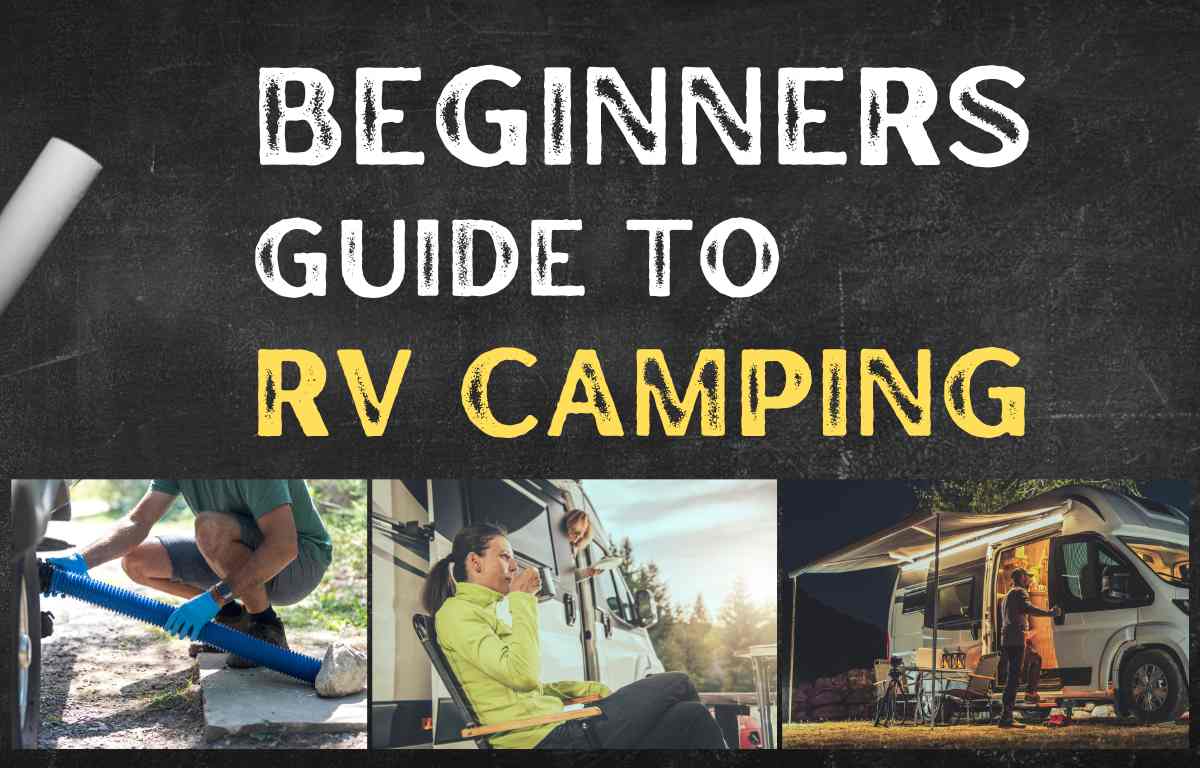
The whole process can seem a little overwhelming for new RVers, but with the correct information, it’s a quick learning curve, and you’ll be on the road before you know it. This article will walk you through the basics and identify some key things to consider when taking the RV plunge. If you have any questions not covered here, please leave a comment, and we’ll answer them for you.
Everyone was new to RVing at some point, even the full-time RVer, so take comfort in knowing that you’re in good company. RV beginners will typically feel unprepared for their first trip. This is a normal feeling, but the important thing to remember is that it will pass quickly, especially after you take your first camping trip.
At Outdoor Miles, our goal is to help you quickly learn the essentials of RVing, from understanding how your RV works to practical tips for enhancing your camping experience. Drawing on extensive personal experience and a dedication to sharing knowledge, this article provides the crucial information every new RVer needs to know. We’re here to guide you through this exciting journey, making sure your first steps into the RV world are both confident and enjoyable. Let’s get started on this adventure together, equipped with all the essentials for a successful RV experience.
Below is a quick list of everything this article covers. However, if you need to focus on a particular area, feel free to jump ahead to the different sections:
- Renting or Buying an RV: Understand the pros and cons of renting versus buying an RV. This section helps determine what suits your camping style and family needs best.
- Motorized vs. Towable RVs: Explore the differences between motorized RVs, like motorhomes and camper vans, and towable RVs, including travel trailers and fifth-wheel trailers.
- Other RV Options: Learn about alternative RV options like truck campers and park models, which cater to different camping styles and requirements.
- New vs. Used RV: This topic delves into the considerations of buying a new RV versus a preowned one, highlighting the importance of thorough inspection and research.
- Tow Vehicles: If you opt for a towable RV, understanding the requirements for tow vehicles is crucial for safe and efficient travel.
- RV Basics: Familiarize yourself with the fundamental systems of an RV.
- Fresh Water System: Discover the RV’s fresh water setup, crucial for supplying water to faucets, showerheads, and appliances. This system involves a network of plumbing, water lines, and tanks, essential for a self-contained water supply or connection to external sources.
- Wastewater System: Understand the workings of the RV’s wastewater system, vital for managing waste from sinks, showers, and toilets. It encompasses the gray and black water tanks, essential for efficient wastewater storage and disposal.
- Propane System: Explore the propane system in an RV, key for powering various functionalities like cooking, heating, and refrigeration. This system highlights propane’s role as a clean, efficient fuel source, easily stored and widely available.
- Heating and Cooling Systems: A key to comfortable RVing, this topic covers the various heating and cooling solutions available in RVs.
- Electric System: Get to know the electrical setup in an RV, essential for powering appliances and devices.
- RV Appliances: Discover the range of appliances typically found in an RV, from refrigerators to air conditioners, which contribute to the comforts of home on the road.
- Where to Camp?: This section guides you through choosing the right campgrounds, from private resorts to national and state parks.
- Tips for Towing an RV: For new RV owners, learn valuable tips on safely towing your RV to your camping destination.
- What to Expect at the Campground: Understand what to anticipate when you arrive at a campground, setting the stage for a smooth camping experience.
- Setting Up Your Campsite: Essential advice on setting up your campsite efficiently and effectively.
- Essential RV Gear: A rundown of the must-have gear for a successful and enjoyable RV camping trip.
Step 1: Renting or buying an RV
To start RVing, the first thing you’ll need is an RV. We’ll cover the different types of RVs later, but first, we’ll look at the options for renting or buying the right RV.
You may not entirely know where to start if you’re completely new to RV camping. Purchasing an RV can be a significant investment, and you’ll want to ensure you’re making the right decision. Luckily, you have options to take this process slowly and can even try out the RV lifestyle by renting one for a trip. The first step to selecting an RV is to remember that this isn’t a “Best RV.” The RV you choose should be the one that fits your camping style and family the best.
Rentals
Renting an RV today is easier than at any other time in history. Not only can you rent from large rental companies like RV America, but you can also rent from other RV owners through programs like RVShare and Outdoorsy. Both platforms allow you to rent virtually any type, size, or RV style. So, if you’re trying to decide between purchasing a large motorhome or a towable, then you can try one out before you take the plunge. RV rentals are available throughout the United States.
As an RV newbie, renting one is a great way to get your feet wet with camping. Even if you don’t have a truck to tow a vehicle, many rentals are available that will bring it to the campground for you. This way, you can have the complete RV camping experience without the stress of figuring out how to get it there.
Buying an RV
If you already know that RVing is right for you and you’re ready to jump right in, purchasing an RV offers many years of camping adventures in the great outdoors. While it can be an expensive upfront investment, the overall cost will be comparable to other vacationing options if you use it regularly for vacationing.
You may already have a plan for the RV you want to purchase, but if not, you’ll need to decide on the RV style. There are many styles to choose from, with the two primary categories being motorized RVs and towable RVs.
Motorized RVs
Motorhomes: These are self-contained units that combine living quarters with on a motorized chassis. These can be large, like a bus, or smaller making them a little easier to drive. Motorhomes are available in different classes that vary in size and amenities. Since motorhomes are drivable, they’ll be much more expensive than a towable RV. Some of the more common motorhomes you may see on the road are class A motorhomes, which look like a bus. A class C RV is a smaller version, which usually has an overhanging sleeping area over the cabin
Class B Motorhome: Also known as camper vans, these smaller motorhomes are built on a van chassis. Class B RVs are easy to drive and park but have limited living space and amenities compared to larger motorhomes. The best thing about a Class B RV, or camper van, is that you can use it for camping or quickly navigate through congested areas, which is difficult with other RVs. THey are great for couples or solo travelers.

Towable RVs
Travel trailers: Travel Trailers are the most common type of RV on the road, primarily because their affordable and offer a tremendous space-to-cost ratio. They are towed by a vehicle, including a living area, kitchen, bathroom, and sleeping quarters. Travel trailers come in numerous sizes and styles, from small teardrop trailers to large 5-slideout luxury trailers.
Fifth-wheel trailers: These are towed by a pickup truck with a special hitch that attaches to the truck’s bed. Fifth-wheel trailers typically have more living space and amenities than traditional travel trailers. Also, since the front of the trailer sits higher than a travel trailer, they have a raised front interior with steps, which provides a lot of storage space in the basement area.
Pop-up campers: Also known as tent trailers, these are lightweight trailers that can be folded down for easy storage and towing. Pop-up trailers typically have a small living area and sleeping quarters. Therefore, they are usually much lighter than other towable options. However, they’re best used in warmer climates, as winter camping in a popup can be challenging.
Toy haulers: These are travel trailers or fifth-wheel trailers with a garage area for storing motorcycles, ATVs, or other recreational vehicles. The garage area can also be converted into additional living space, such as a bedroom. If you need to bring your toys along, a toy hauler will be your best option.
Other RV Options
Truck campers: These are designed to be mounted onto the bed of a pickup truck and can be easily removed for transportation. A truck camper usually includes a living area, kitchen, and sleeping quarters. Since the RV is in the bed of a truck, you usually need a heavy-duty truck designed to carry the weight. At a minimum, you will need a ¾ ton pickup, but likely something more extensive like a 1-ton or duly.
Park models: These are larger, stationary trailers designed to be placed in a campground or RV park. Park models usually have more living space and amenities than traditional travel trailers and are often used as vacation homes. A park model is a great option if you want a lot of space and plan to be stationary for most of your camping.
New vs. Used RV
Whether you purchase a new RV or look at a preowned unit, there are many options and floorplans to choose from. While a used RV can be a great option, always do your homework and thoroughly inspect the RV before signing on the dotted line. To get started on the used RV buying process, here’s a great guide to get you started.
Also, when shopping for a new RV, check out multiple dealers. Finding the right RV dealership is as important as finding the right RV. You will likely need to visit them for service in the future. Finally, visiting an RV show is one of the best ways to start your RV buying process. There, you’ll be able to see nearly every style of RV and walk through them to get a feel for the layout and if it will be right for you and your family members.
The following article is an excellent resource for buying an RV at a show, and it walks you through the steps for getting the best deal.
Tow Vehicles
When settling on an RV, you must also consider other factors for getting it to the campground, especially if you’re looking at a towable unit such as a travel trailer or fifth wheel. Towable RVs are often the most economical of the group. However, you’ll also need to think about a tow vehicle, and while a trailer may seem more affordable, your budget can quickly increase if you also need to purchase a truck to tow it. While some small travel trailers that can be towed with an SUV, they are pretty small and may not be adequate for a large family.
RV Basics
Once you have an RV, it’s time to learn the basics of how to operate it. Since RVs are designed to be tiny homes on wheels, many of the comforts of home are available on an RV. However, these comforts operate differently than what you may be used to. So first, let’s look at the major components of an RV.
Fresh Water System
An RV water system is a complex network of plumbing, water lines, pumps, and tanks that deliver fresh water to an RV’s faucets, showerheads, and appliances. The water system is designed to be self-contained or can connect to an external water source when a hookup is available.
The RV water system typically includes three main components: a freshwater tank, a water pump, and a water heater. When connected to a faucet, the system will function like your home water system. It pulls in fresh water from the inlet and feeds all of your plumbing fixtures, including the sink, shower, and toilet.
When you’re not connected to a hookup, you can prefill the freshwater holding tank, which uses the stored water to supply you with water. The freshwater tank stores the clean water used for drinking, cooking, and cleaning. The water pump draws water from the tank and delivers it to the faucets and appliances throughout the RV.
The freshwater tank is usually located underneath the RV and can hold anywhere from 10 to 100 gallons of water, depending on the size of the RV. However, most average-sized RVs will have 30-50 gallons tanks. In addition, some RVs have multiple tanks for fresh water, gray water (wastewater from sinks and showers), and black water (wastewater from the toilet).
The water pump is typically located near the freshwater tank and is powered by the RV’s electrical system or a 12-volt battery. The pump draws water from the tank and sends it to the faucets and appliances through the RV’s plumbing. The pump has a pressure switch that turns it on and off to maintain water pressure.
You will also have both cold and hot water. For example, your water heater heats the water for showers and washing dishes. The water heater is usually located inside the RV and can be powered by electricity, propane, or both. Like at home, the water heater heats the water to a specific temperature and then sends it to the shower and faucets as needed.
To maintain a clean and functional RV water system, it’s important to regularly sanitize the fresh water tank and replace the water filter if you have one. It’s also important to use non-toxic, RV-specific antifreeze during the winter months to prevent the water system from freezing and causing damage. With proper maintenance and care, an RV water system is very reliable and can provide clean, fresh water for you when camping.
RV Wastewater
One of the least glamorous aspects of RV camping is dealing with wastewater. While it’s not the “fun” part of camping, it makes it possible to have many other comforts available in an RV, such as a flush toilet, hot shower, and the ability to do dishes. An RV wastewater system collects and stores wastewater from various sources inside the RV, such as sinks, showers, and toilets. There are two types of wastewater tanks in an RV: a gray water tank and a black water tank.
The gray water tank holds wastewater from the sinks and shower, while the black water tank holds wastewater from the toilet. The toilet waste is mixed with chemicals that break down the solids and help control odors. While it’s common to worry about odors from your tank, especially the black tank, with proper maintenance, it’s typically not noticeable. However, if it does smell, something is likely wrong with the system, or it needs to be emptied.
When the tanks become full, the RV owner must empty them. This is usually done at a full hookup campsite or a dump station. As part of your RV purchase, you’ll also need to pick up some sewer hoses that connect to a waste connection pipe at your site. When flushing your tanks, you’ll want to empty the black tank first, let it drain, and then empty the grey tank, which will clean out your lines with mostly fresh water.
Some RVs may also have a macerator pump, which grinds up the waste before it is released into the dump station, making it easier to empty and reducing the risk of clogs. While most RVs don’t come standard with one, you can always add one if needed. However, it’s not always necessary.
Finally, it’s essential to properly maintain and clean the RV wastewater system to prevent odors, clogs, and other issues. A clean wastewater system makes for a happy camper.
RV Propane System
You’ll be using propane to run many of your systems in an RV. An RV uses propane in various ways, including cooking, heating, refrigeration, and hot water. Propane is a popular fuel source for RVs because it is clean-burning, efficient, and easily stored in portable tanks. It’s also easy to find, and many campgrounds offer filling stations.
Cooking is one of the most common uses of propane in an RV. Most RVs are equipped with a propane stove, range, or even an outdoor grill on some units. Be aware that most RV cooktops and ovens are smaller than what you have at home. While it’s not a problem for most people, you may need to pick up some smaller cookware to fit your
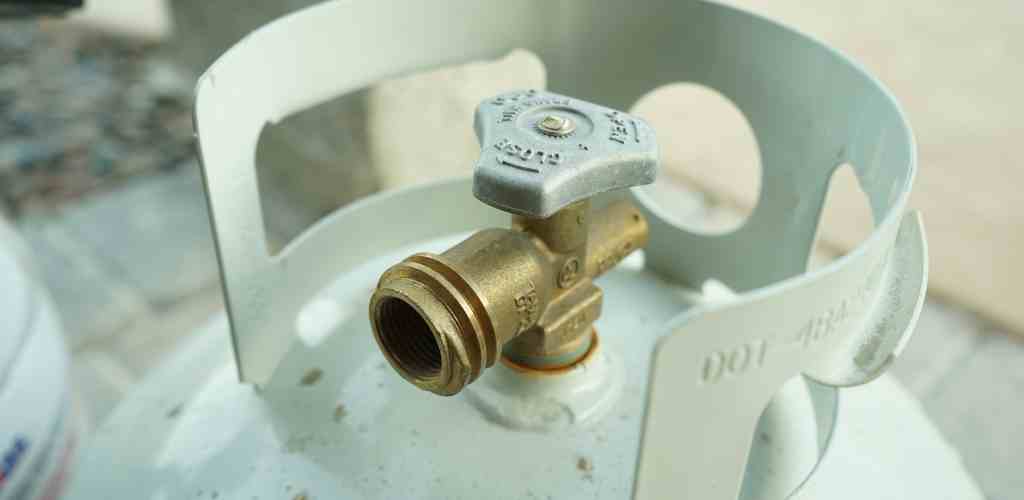
Propane is also used for heating inside the RV. Most RVs are equipped with a propane furnace, which uses a flame to heat the air and distribute it through ducts to various parts of the RV. Propane heaters are also available as standalone units and can supplement the RV furnace or provide heating in specific RV areas.
In many RVs, refrigerators can also use propane. Propane-powered refrigerators are common in RVs because they are efficient and do not require electricity. These refrigerators use propane to heat an absorption chamber, which then cools the refrigerator and freezer compartments. This makes it possible to camp without electricity and still have a place to store your cold food.
Hot water is also typically provided by propane in an RV. Propane water heaters are typical in RVs and can provide hot water through a tank or on-demand system. They heat water and distribute it to faucets and showerheads throughout the RV.
Propane is typically stored in portable tanks that can be easily refilled or replaced as needed. It’s essential to follow proper safety guidelines when using propane in an RV, including ensuring that the tanks are properly secured and vented and that all propane appliances are properly maintained and inspected regularly. In addition, I recommend keeping a bottle of a propane leak detection solution in your RV. While rare, a propane leak can be very dangerous.
Heating and Cooling Systems
A heating and cooling system is essential for maintaining a comfortable living space inside your RV, regardless of the weather conditions outside. The system is designed to be compact and energy-efficient, providing reliable heating and cooling throughout the RV.
Several types of RV heating and cooling systems are available, including rooftop air conditioners, portable air conditioners, and ducted heating systems. Rooftop air conditioners are the most common type of air conditioner installed on the RV’s roof. They use a compressor and refrigerant to cool the air inside the RV and are typically controlled by a thermostat.
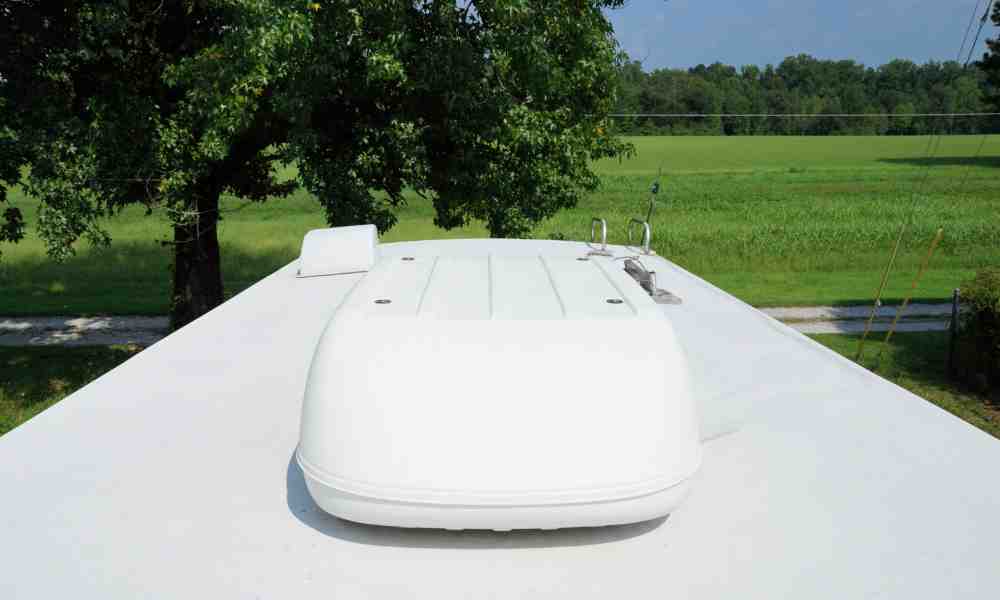
Ducted heating systems are a popular option for RVs and use a furnace to heat the air and a network of ducts to distribute the warm air throughout the RV. They are typically more energy-efficient than portable heaters and can provide consistent heating throughout the RV. However, if camping in winter, many RVers choose to have a portable
Some RVs may also have a heat pump that provides heating and cooling functions. A heat pump transfers heat from the air outside the RV to the air inside the RV, providing both heating and cooling capabilities in one unit. While not too common, it’s becoming a popular setup for many campers.
It’s important to properly maintain and care for the RV heating and cooling system to ensure it operates efficiently and effectively.
Regular maintenance includes cleaning or replacing air filters, checking and maintaining the refrigerant level, and inspecting and cleaning the ducts. I typically recommend that you set a cleaning schedule, with most of the tasks being completed once per year.
Electric System
An RV electric system provides a lot of comfort to living in an RV. Like the water system, you can connect to the services at a campground, and your RV components will function like your electric system at home. However, when off the grid, an RV can also pull power from batteries and provide you with electricity.
The RV electrical system provides power for lights, appliances, and other electrical devices. The system is designed to be self-contained, allowing the RV to operate independently of external power sources when needed.
The main components of an RV electric system include a battery, converter or inverter, circuit breaker panel, and various outlets and switches. The battery is typically a deep-cycle battery, providing sustained power for extended periods. The converter or inverter converts AC power from an external source (such as a campground hookup) to DC power that the RV’s electrical devices can use. Alternatively, an inverter can convert DC power from the RV’s battery to AC power that can be used by devices that require it.
The circuit breaker panel controls the flow of electricity throughout the RV and prevents electrical overloads or short circuits. The panel includes individual breakers for each electrical circuit in the RV, allowing you to turn off power to specific devices or systems as needed.
Outlets and switches throughout the RV provide access to electrical power for lights, appliances, and other devices. These outlets and switches may be powered by the RV’s battery, external power source, or a combination of the two.
When plugged into an external power source, such as at a campground hookup, the RV electric system can draw power from the source to charge the battery and power the RV’s electrical devices. The converter or inverter can also convert the external AC power to DC power for RV devices.
When not plugged into an external power source, the RV can rely on the battery. The battery can be charged using a generator or solar panels, and the converter or inverter can be used to convert the battery’s DC power to AC power for devices that require it. However, be aware that batteries have limitations. For example, if you plan to run your air conditioning off of a battery setup, you will need a large battery bank that will be very expensive.
Finally, you’ll find options for 30-amp and 50-amp systems when shopping for an RV. While they both function similarly, a 50 amp system will allow more electricity to be supplied to the RV. This is usually important if you plan to run two air conditioners. For smaller RVs, a 30-amp system is usually more than enough.
RV Appliances
An RV is a home on wheels, and as such, it includes a range of major appliances to provide comfort and convenience when traveling. Here are some of the most common appliances found in an RV:
- refrigerator: An RV refrigerator is a compact unit designed to fit into the limited space available in an RV. These refrigerators may be powered by electricity, propane, or a combination of the two. Some larger RVs will have residential-sized refrigerators installed.
- Stove and Oven: An RV stove and oven provide a way to cook meals while on the road. These units are primarily powered by propane. It is typically smaller than the one you have at home and may cook less efficiently. However, it’s something you learn to get used to over time.
- Microwave: Most RVs will have a microwave like the one you have at home. These units are powered by electricity, so they’re typically not an option when boondocking and running on battery power.
- Air Conditioner: An RV air conditioner is used to keep the interior of the RV cool and comfortable during hot weather. These units may be rooftop or window-mounted and may be powered by electricity or a generator.
- Furnace: An RV furnace provides heat during cold weather and is typically powered by propane. However, the blower requires electricity, available when plugged in or running off a battery.
- Water Heater: An RV water heater provides hot water for showers, washing dishes, and other purposes. These units may be powered by propane or electricity and may be tankless or include a storage tank.
- Washer and Dryer: Some larger RVs may include a washer and dryer for laundry. These units may be compact and stackable. These are typically only found in motorhomes and fifth-wheel RVs.
Where to Camp?
When it comes to selecting a campground, you’ll have plenty of options. Most RVers will choose to camp at established campgrounds such as private RV resorts, National Parks, or State Parks. Many private campgrounds will have full amenities like full hookups, swimming pools, playgrounds, laundry services, etc. National and State Parks may have some of these as well, but it’s common to find campgrounds that won’t have full hookups and may only have water. You may need to forgo electricity, use your batteries, or run a generator if allowed.
Before you select a campground, double-check to ensure your RV will fit on the site. Some campgrounds have size limitations and can only accommodate a smaller RV. This is typical in National and State parks. This is especially important if you have a big rig. Even some private RV parks have size limitations
You can also choose to boondock in less established campsites in state and federal lands. In many parts of the country, finding free sites to camp is possible. It doesn’t mean you’ll be camping in a Walmart parking lot or at a truck stop. There are numerous beautiful and scenic places to camp for free- typically called boondocking. Many full-time RVers swear by incorporating free camping in their travel plans. While generally more accessible out west, you may have access to free locations to set up camp on public lands such as national forests and other Bureau of Land Management lands.
Many of these properties offer primitive camping. Unless specifically prohibited, you can boondock in almost any National Forest. You may need to travel along long, unimproved forest roads to access these sites. In some instances, this may be difficult for larger RVs or trailers. However, there are many accessible sites for even the largest Class A motorhome or travel trailer.
Downloading the United States Public Lands App is great for finding public land boondocking sites. Also, read some reviews and check out pictures of the sites from past campers before you haul off down the 5-mile unpaved road.
Tips for Towing an RV
As a new RV owner, the lifestyle may seem overwhelming at first. Not only do you need to learn how to operate all of the new systems, but you also need to get it to the destination to camp. Whether driving your RV or towing it, it can be stressful at first. It will be much different than driving a regular vehicle. If you’re new to it, I suggest practicing, practicing, and practicing some more.
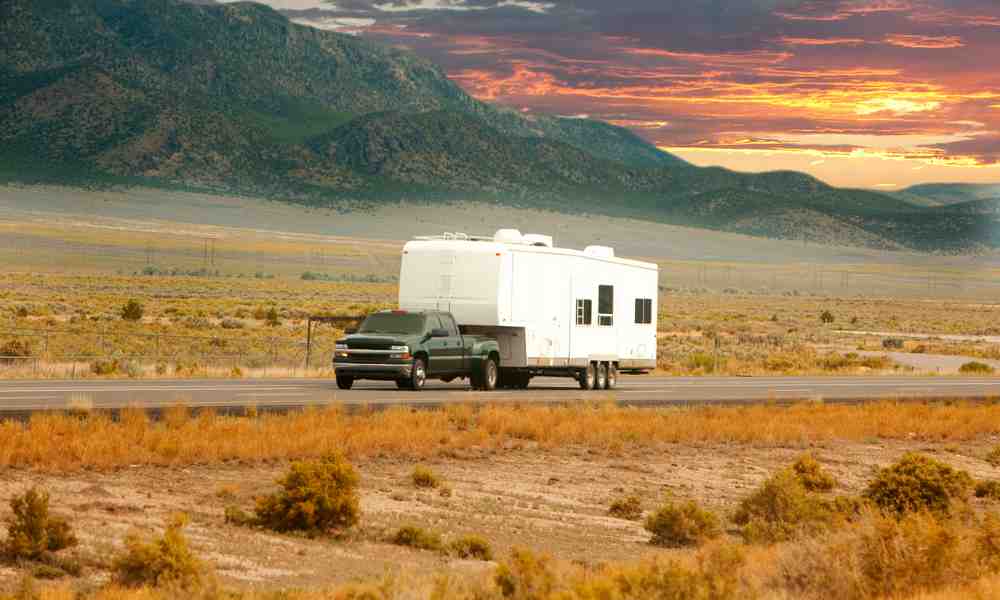
Towing an RV can be a daunting task, especially for those who are new to RVing. However, with practice and basic knowledge, anyone can become proficient at towing an RV. Here are some tips on how to practice towing an RV:
Before you head out on the open road on a 5-hour road trip, consider practicing towing close to home. A great place to do this is in a large parking lot, like an old shopping mall, with plenty of room and little traffic. So block out an afternoon, hitch up, and head out for some towing practice.
- If you can, start with a smaller trailer: If you are new to towing, start with a smaller trailer that is easier to maneuver and handle. This will help you gain confidence and experience before moving to a larger RV. While it may seem silly, you can rent a 12 ft. trailer from U haul for very little money. If you’re entirely new, this may be a good option to get your feet wet with a trailer in tow.
- Find an open space: When practicing towing an RV, you must find an open space to practice maneuvering and backup without the risk of hitting anything. A large, empty parking lot or an open field is ideal.
- Practice turning: Turning with an RV can be tricky, so practice turning both left and right at different speeds. Again, take note of the trailer’s swing and how it affects the turning radius.
- Back up: Backing up an RV can be one of the most challenging aspects of towing. First, practice backing up in a straight line, and then try backing up around corners and into parking spots. Next, pick up some cones to set up a simulated campsite and practice backing into it without worrying about hitting anything.
- Pay attention to weight distribution: Proper weight distribution is essential for safe towing. Ensure the weight is evenly distributed between the front and back of the trailer and that the tongue weight is within the recommended range. Again, there are many helpful videos on this, so do some homework and pay attention to this before heading out on your first RV trip with a fully loaded rig.
- Use your mirrors: Your mirrors are your best friend when towing an RV. Make sure they are properly adjusted, and use them frequently to keep an eye on the trailer and other vehicles around you. If your vehicle has small mirrors, consider purchasing some clip-on tow mirrors.
- Take it slow: When towing an RV, it is essential to take it slow and be patient. Give yourself ample time and space to maneuver and avoid sudden movements that could cause the trailer to sway. Trailer sway happens when the trailer is moving faster than the RV. It can progressively worsen as you try to slow down and cause your RV to sway out of control. The best way to avoid sway is to drive slowly and ensure that your RV is loaded correctly and that you have a large enough vehicle to tow it.
Remember that practice makes perfect; the more you practice towing an RV, the more comfortable and confident you will become. Don’t be afraid to ask for help or take a towing course to improve your skills. With time and practice, towing an RV can become a stress-free and enjoyable part of your RVing experience. I actually enjoy towing my RV, but I was terrified of it when I first started.
What should you expect at the campground?
If you’ve never been to an RV campground before, checking in to setting up your RV can be stressful. However, everyone camping there was new at one point, so don’t feel pressured to get everything right on your first trip. Also, when maneuvering your RV into the campground for check-in, traveling to your site, or backing it in, TAKE YOUR TIME. Don’t let anyone pressure you to move faster or get flustered if people are watching you.

Below are some of the basic steps of checking into a campground and getting to your site:
The process of checking in and getting to your campsite in an RV at a campground may vary depending on the specific campground, but here are some general steps to follow:
- Make a reservation: Before arriving at the campground, make a reservation in advance to ensure availability for your desired dates. Since camping has grown in popularity over the past few years, reservations can be challenging, especially in popular areas or during holiday weekends. Book as early as possible to get the site you want.
- Check-in: When you arrive at the campground, you must check in with the office or at the gate. Most campgrounds will have a check-in parking area that will be signed appropriately. If you’re new to the campground, call them before your trip and ask about their check-in procedure. However, don’t park at the gate and block others from entering. If you do, someone will surely tell you to move, and it may not be in the most pleasant manner.
- Get your RV campsite: The campground staff will give you a campsite assignment, typically including a campground map and directions to your site. Be sure to ask any questions about the campground rules or amenities at this time. Also, take some time to review the map, as they’re not always to scale. It’s helpful to have a passenger navigate for you so you can focus on driving. Also, most campgrounds have strictly enforced speed limits of 5 MPH. So don’t speed; watch out for kids, dogs, or other vehicles.
- Set up camp: Once you have arrived at your campsite, park your RV in the designated spot and set up your site. This may include leveling your RV, connecting to utilities such as water and electricity, and putting out any chairs, tables, or other camping equipment you brought.
Remember to follow campground rules and regulations, such as quiet hours or campfire restrictions, to ensure a safe and enjoyable stay for yourself and other campers.
Setting up your campsite
Setting up your RV at a campground can be a process, but ensuring a safe and comfortable stay is important. Here are the general steps to follow when setting up your RV:

- Park in the designated spot: When you arrive at your campsite, park your RV in the designated spot. Most sites will be adjacent to another site, so ensure you’re only on your site, not theirs. Each site will have a different layout, but most campgrounds are designed for back in your RV. Some will have pull-through sites, but they’re less common. Ensure you are backed in fully, leave enough room to park your vehicle (if you have one), and are set up near your water, sewer, and electricity connections.
- Level your RV: Use leveling blocks or jacks to
level your RV if the site is not already level. This will help prevent any issues with appliances or furniture in the RV that may be affected by an uneven surface. My favorite leveling tool is the Andersen levels matched with the LevelMate Pro (check out this helpful article) - Connect to utilities: Connect your RV to any available utilities, such as electricity, water, and sewer. This may involve using hoses and cords to connect to the campground’s utilities, so be sure to have these on hand. Follow all safety guidelines when connecting to electricity.
- Set up your awning and outdoor equipment: If you have an awning, set it up to provide shade and shelter. Also, set up any outdoor equipment you plan to use during your stay, such as chairs, tables, or grills.
- Sit back and relax. While setting up your RV for the first time may take longer, take your time and do it right. Then, once it’s done, let the relaxing begin and enjoy the camping lifestyle.
Essential RV gear
When you purchase your RV, you’re almost ready to camp, but there are some essentials that you’ll need to purchase. These include:
Water hose: A drinking water-safe hose is essential for connecting to the campground’s water supply.
Sewage hose: A durable, leak-proof sewage hose is needed to connect your RV to the campground’s sewage system. Also, it’s helpful to purchase a kit with different lengths of hoses and connectors for various setups.
Electrical adapter: Bring an electrical adapter that matches your RV’s electrical cord to the campground’s electrical hookups. If you have a 30A RV, you will want a 30A to 50A adapter. Likewise, a 50A RV will want a 50A to 30A adapter.
Surge protector: A surge protector will protect your RV’s electrical system from power surges and other electrical problems. While not required, it’s a good investment for protecting your expensive RV electronics and appliances.
Leveling blocks: These are useful for leveling your RV on uneven terrain.
The Andersen Camper Leveler system is a simple, low-tech solution to fine-tuning your RV leveling. The system involves two components: A curved riser and a wheel chock. To use, you simply place the curved leveling pieces under the tires of the side that you need to raise up and back/drive onto it. Once level, you just insert the wheel chock behind the opposite side of the level, and you’re done.
This system makes it extremely efficient to level your RV, especially when combined with a wireless level reader like the LevelMatePro.
Pros
- Simple and low-tech design
- Sturdy and almost indestructible- solid as a rock
- One person leveling made simple
- Made in the USA
Cons
- More expensive than plastic blocks
- Limited height (only lifts up to 4”)
Wheel chocks: Wheel chocks keep your RV from rolling while parked. Don’t skip these, as they are an essential safety tool.
Extension cords: While not common, some campsites may have an electrical connection further away than you can reach with your cord. It’s helpful to have one on hand, just in case.
Drinking water filter: A drinking water filter can help remove impurities from the campground’s water supply and ensure clean drinking water. Not every campground has good-tasting water. A filter is an inexpensive way to fix this problem.
Gloves: Disposable gloves can be useful when connecting and disconnecting hoses.
Flashlights and headlamps: These are useful for navigating the campsite at night and checking RV hookups if it’s getting dark outside.
Conclusion
First, let me start by saying congratulations on your decision to give RV camping a try. I hope this article proved helpful in your journey to getting started. It’s always a good idea to do a lot of research when you’re making a big investment, which an RV can be. Now that you’re equipped with the knowledge to get started, the fun part is right around the corner, which is camping.
When you get your first RV, take time to get to know it. Read all of the manuals, practice operating it at home, and double-check all of the safety items for operating and towing your RV. Also, be sure to pick up the basic tools you’ll need at the campground. You don’t want to get to the site and realize you can’t connect your sewer hose, power cord, or other components.
My last tip is to have fun. You’ll surely run into challenges, but they will be a learning opportunity to help you in the future. This will hopefully be a lifelong venture that will produce priceless memories. Happy camping and safe travels. I look forward to seeing you on the road!

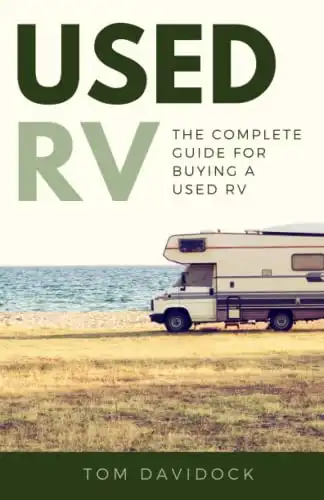
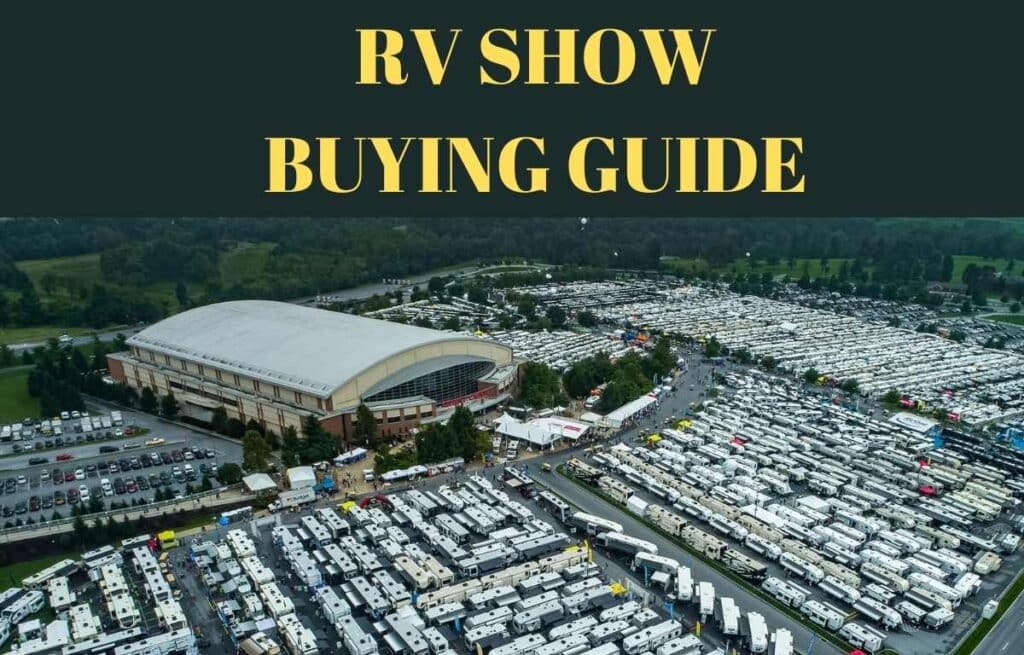
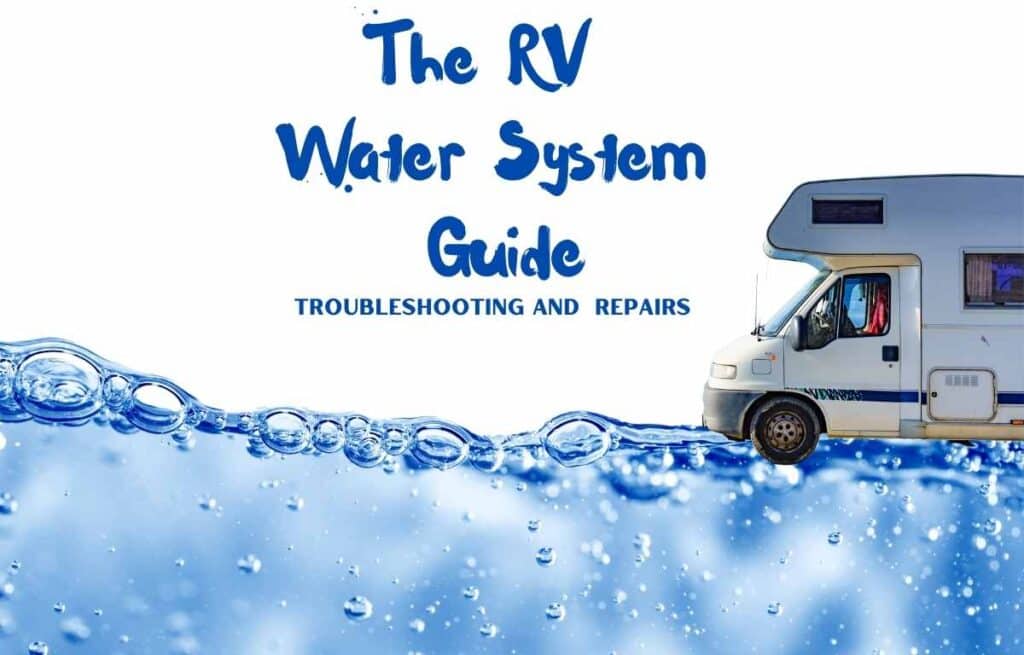


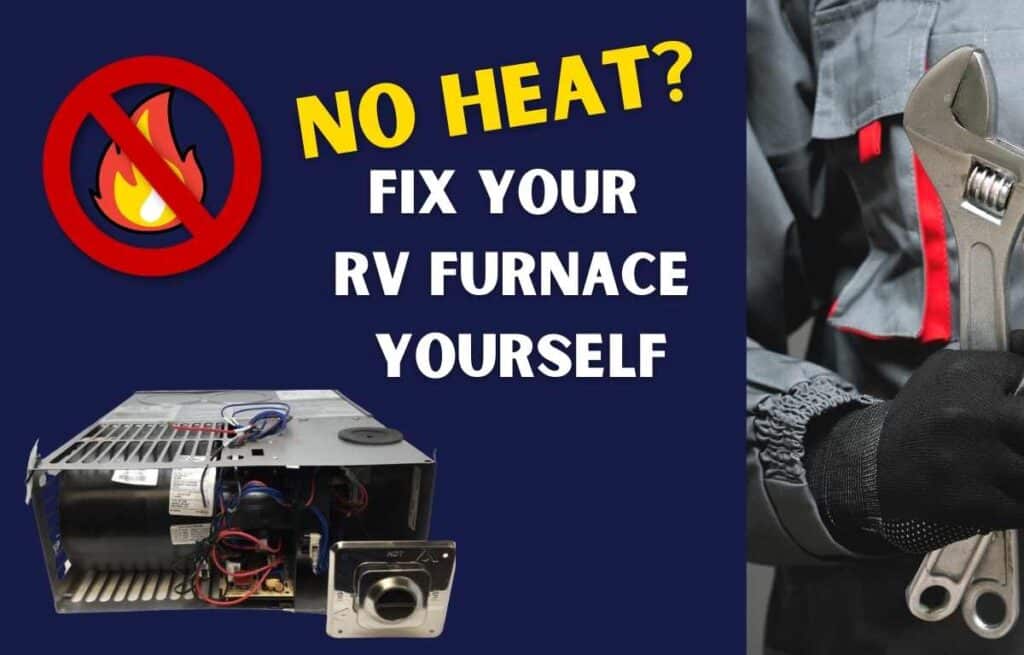
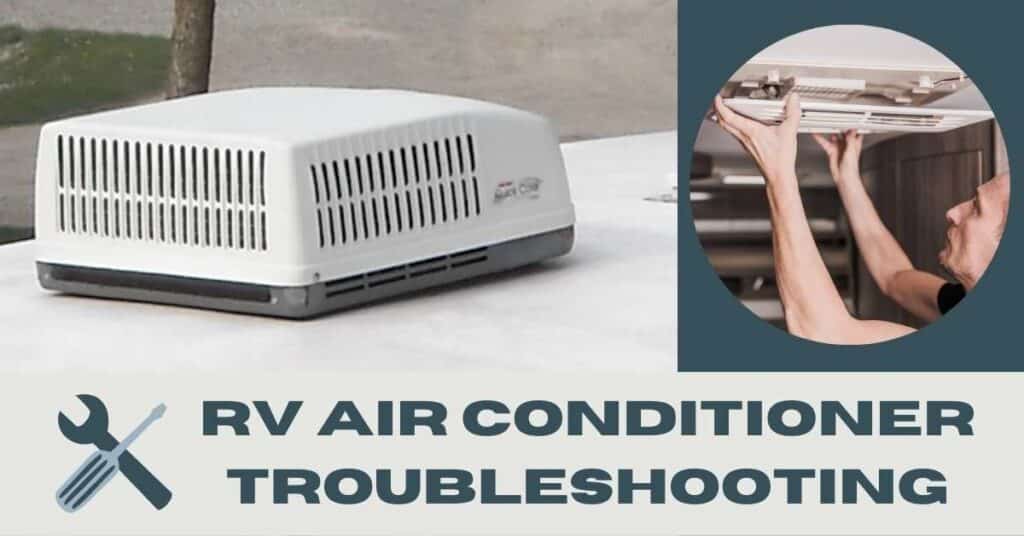

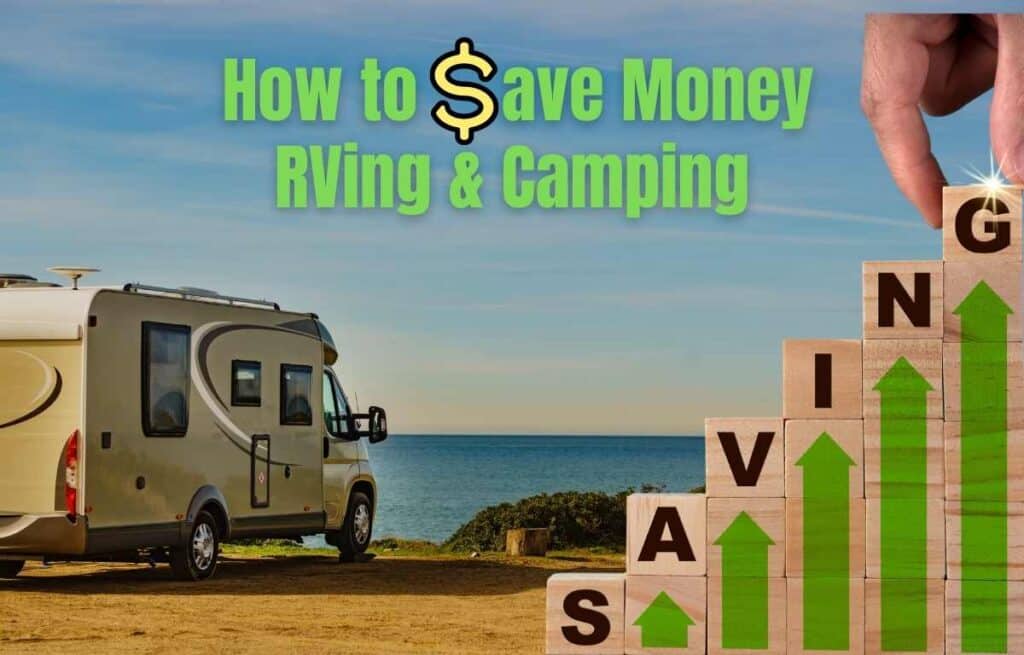
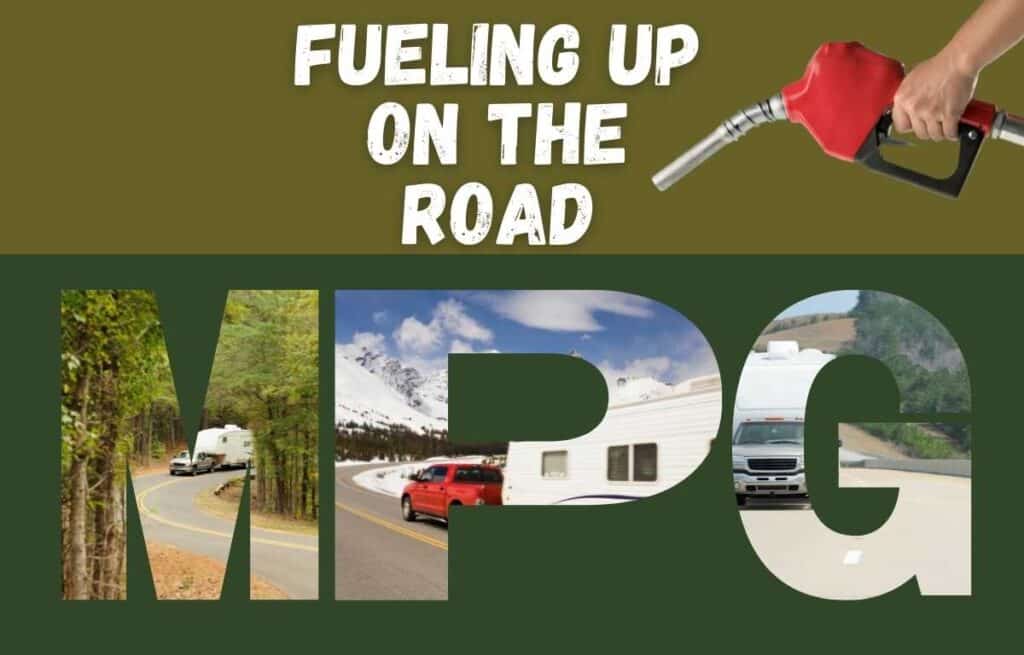
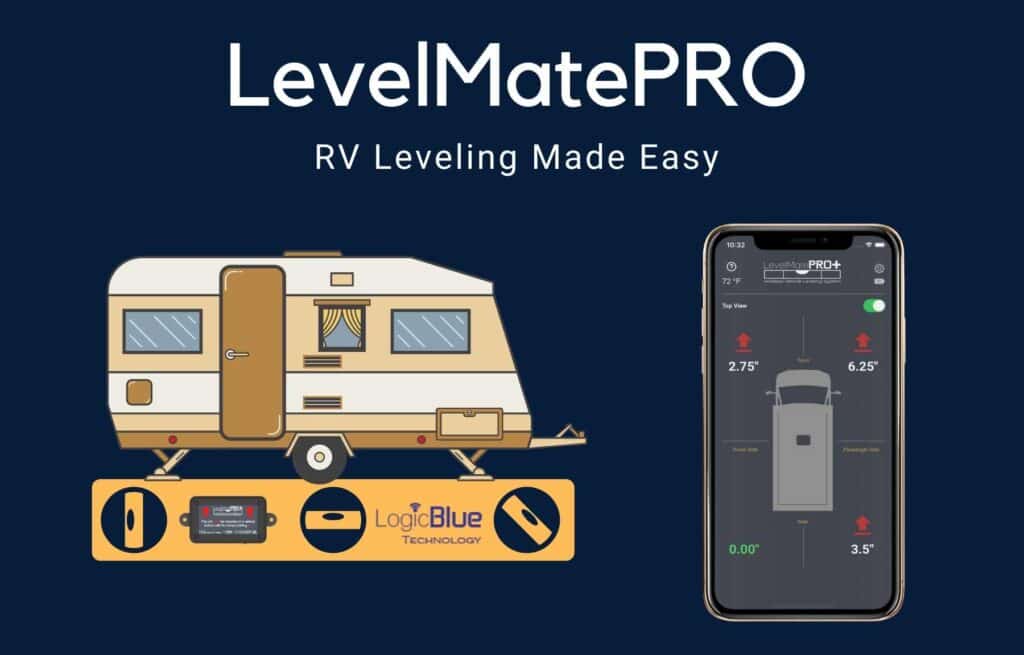
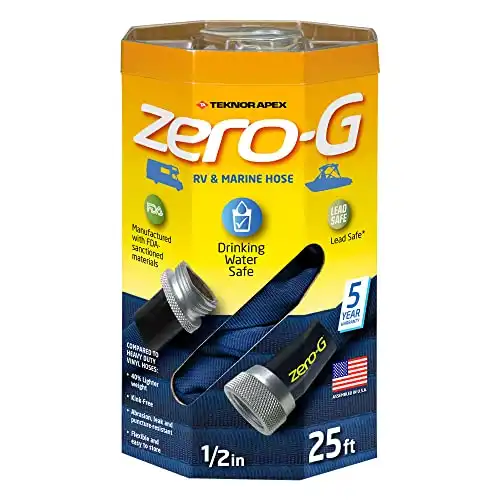
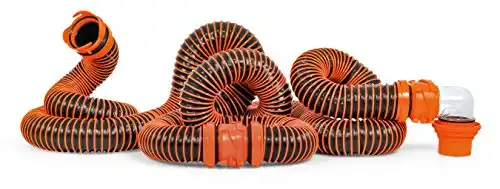
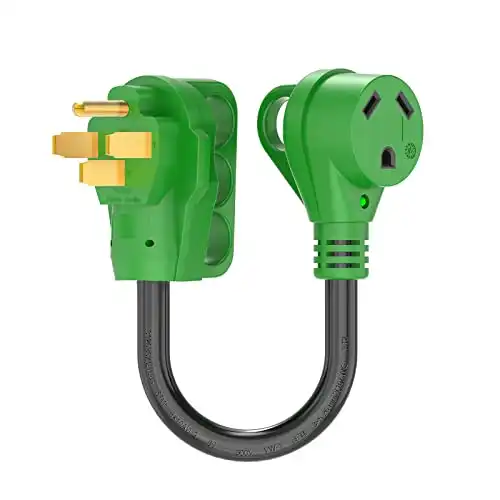

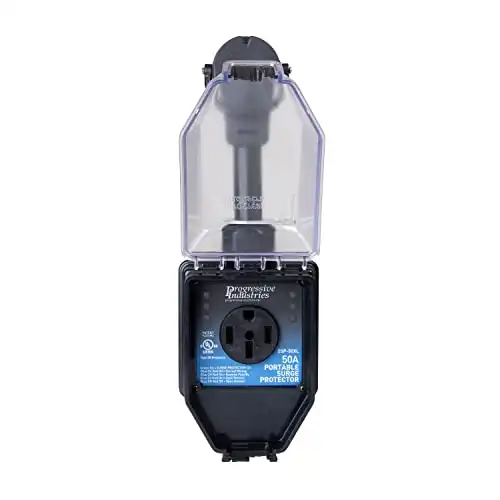
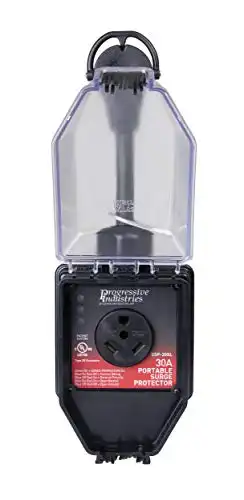
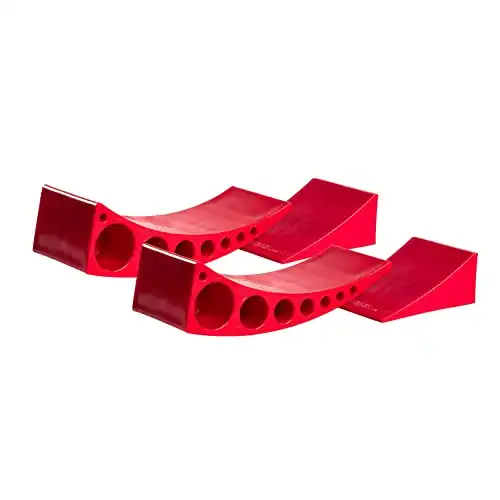
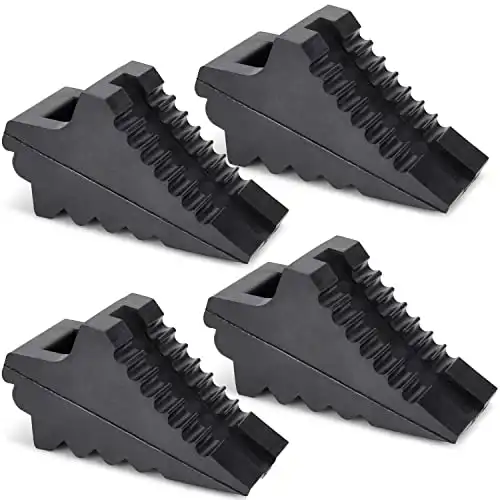
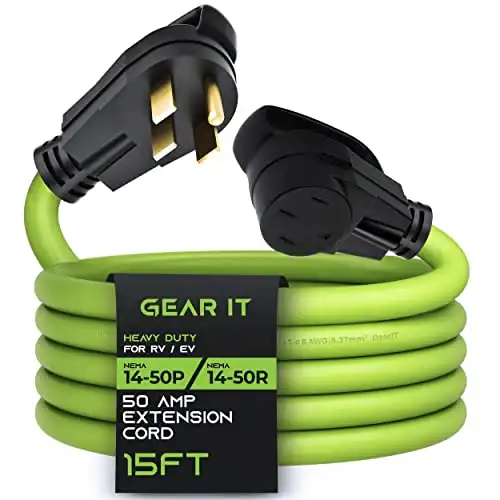
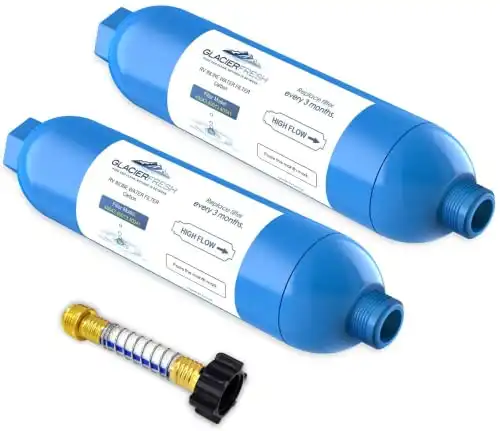
![[100 Count] Black Nitrile Disposable Gloves](https://outdoormiles.com/wp-content/uploads/2023/08/419yO02TwkL._SL500_.webp)

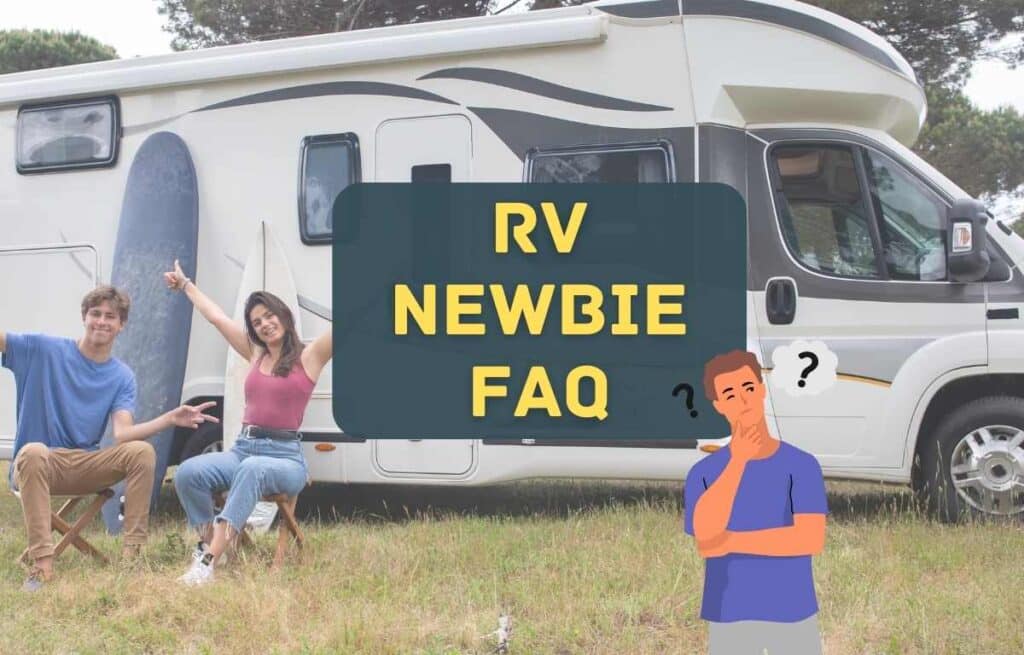
It’s good that you mentioned that park models usually have more living amenities since they are often used as vacation homes and placed in campgrounds for those who plan to be stationary for most of their camping trips. I rented a park model for our camping trip later this month, so all we need now is to find an RV park to stay in. I’ll be sure to keep this in mind while I look around for RV parks with available spaces we can reserve for our trip soon.
Awesome! I hope you have a great trip and enjoy your home away from home. Don’t hesitate to reach out if you have any questions.
It’s helpful that you pointed out that park models often offer greater living facilities because they’re frequently utilized as second homes and erected in campsites for campers who want to stay around for most of their outings. All we have to do now is find an RV park to stay in because I reserved a park model for our upcoming camping vacation later this month. I’ll be sure to bear this in mind while I search for RV parks with open spots we may secure for our next vacation.
Thank you for talking about weight distribution. My husband and I have been talking about taking the kids camping this year in our RV. We haven’t used it much, so this reminder should be helpful for preparing to go.
Good luck and I’m sure you and your family will have a blast. Don’t hesitate to reach out if you any additional questions about getting started or weight distribution hitches.
This comprehensive RV beginner’s guide is a must-read for anyone considering embarking on an RV adventure. It covers all the essential aspects of RVing, from choosing the right type of RV to tips on planning your trips and understanding campground etiquette. The inclusion of useful resources and links adds extra value to the article. The step-by-step approach makes it easy for newcomers to grasp the fundamentals, while the practical tips from experienced RVers offer valuable insights. Overall, this guide is a fantastic starting point for those looking to explore the world of RV travel and provides a wealth of information to ensure a smooth and enjoyable journey.